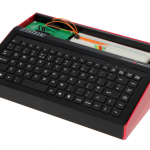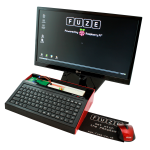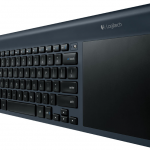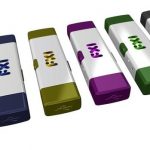My favorite tech products of 2013 [Ian]

Being slightly late to the party when it comes to posting my list of favorite tech kit for this year means you'll probably have seen some of these things on other people's lists too -- blame spending Christmas in an internet free zone.
But hey, this is very much a personal thing, so these are my particular selections and the reasons why I've chosen them.
Fedora 20 is here -- an early Linux Christmas present

Many Linux users have been holding their breath in anticipation for the 20th version of Fedora Linux, codenamed Heisenbug. While not the most popular distribution overall, it is the distro of choice for one influential user -- Mr. Linus Torvalds, creator of the Linux kernel. Not to mention, many other users around the globe.
Sadly, version 20 has missed its deadline a couple of times. While those delays were disappointing, it was also appreciated. After all, you do not want a buggy operating system, do you? Luckily, Santa Claus came a little early to the Linux community -- the final version of Fedora Linux is here now!
The most popular stories on BetaNews this past week - November 17 -- 23

Sony PlayStation 4 hit the stores and Brian not only took a look at the brand new console, but also cracked open the case and slipped a larger hard drive inside. Brian wasn't alone in his love of the PS4, more than a million people also bought a console on the day of launch. But not everyone was happy as many units were found to suffer from a Blue Light of Death problem that rendered them unusable. Raspberry Pi was also celebrating its sales figures as more than two million were shifted since its launch last year.
In a rare show of unity, Microsoft and Google joined forces to help tackle the problem of online child pornography. At the same time, Microsoft took its Scroogled campaign to a new level by releasing merchandise (although Joe was impressed). Elsewhere online, Twitter introduced Twitter alerts to the UK and Ireland to help provide people with critical information in an emergency.
Fedora Linux 20 Heisenbug Beta available now

Fedora recently celebrated a 10th birthday, but the Linux distribution is not done reaching milestones. Today, Red Hat announces that Fedora is launching the beta version of the upcoming 20th version of the popular operating system, dubbed "Heisenbug".
"Linux enthusiasts are encouraged to download the beta release of Fedora 20, take it for a test drive and help identify items that may need attention before Fedora 20 is generally available. With the beta release, the software is feature complete but may have some bugs. Real-world testing and reports from users are vital to help identify any new or undiscovered bugs so that they can be addressed before wider distribution", says The Fedora Project Team.
The most popular stories on BetaNews this past week: October 6 -- 12

In another busy week, Microsoft continued to promote Internet Explorer 11 by showing off some of the new features that will be available to Windows 8 users. At the same time, the company released a tool that lets Windows 7 users block the update. Microsoft also announced that it would speed up the approval process for apps submitted to the Windows Store, so initial certification can be complete within five days.
Moving away from the desktop, champagne corks were popping as it was revealed that Raspberry Pi has sold 1.75 million units. After the launch of Mavericks, Mihaita was taken with his MacBook Air, and I was quite impressed with the Tesco Hudl -- although it's not going to be replacing my Nexus 7 any time soon.
Taking programming back to the 1980s -- hands on with the FUZE [Review]

Back in the late '70s at the tender age of 19 or so I learned to program in COBOL on a system that used punched cards -- a Sperry UNIVAC for those who care about these things. There was no instant gratification to be had with this method, non-essential (i.e. student) programs were run as overnight batches so you had to submit the cards holding your carefully-crafted code in a cardboard box. You went back the next morning (OK, afternoon) to collect your output which, naturally, came on blue and white striped continuous paper.
The next generation were able to learn the joys and frustrations of writing code in the comfort of their own bedrooms and lounges thanks to home machines that ran BASIC, no longer did it take 24-hours to fix a bug. Today though affordable PCs and off-the-shelf software for just about any purpose mean that everyone can use a computer without having any need to understand what makes it work.
The FUZE aims to make UK fall in love with coding again [Q&A]

The FUZE is a new programable computer and electronics workstation based around the Raspberry Pi. It's built in the UK and its designers believe it will appeal to the education sector as well as home electronics enthusiasts.
We hope to get some hands-on experience with one soon but in the meantime we spoke to Jon Silvera the managing director of Binary Distribution, the company behind the FUZE, to find out more about it.
Logitech Wireless All-in-One TK820 [Review]

I am typically not a fan of hardware convergence. My first computer, a Packard Bell, had a combination sound card and modem -- I kid you not. When I decided to upgrade the modem, I lost sound. What I learned that day so many years ago, is that it is better to have individual components.
When the opportunity to test the new Logitech All-In-One TK820 arose, I was excited. Logitech is known for quality hardware; but a combination keyboard and trackpad? I was dubious to say the least.
Submit your questions for the Internet Explorer team

Usually when I do a Q&A session with tech firms like IBM, The Raspberry Pi Foundation, and Vonage, I come up with the questions myself, picking topics I think will be of most interest to our readers. However, for my forthcoming interview with the Internet Explorer team I want to shake things up a bit.
So instead of compiling the list of questions myself, I’d like your help and input. If you've a burning question you'd like the IE team to answer, post it in the comments below.
Use OpenElec 3.0.0 to build your own XBMC media center PC

Got a lot of media stored digitally? Want access from a range of devices, including your computer, mobile and smart TV? One of the best tools for the job is the wonderful, and open-source, XBMC 12.1. It’s capable of so much, acting as a media center, DLNA-compatible server an, from version 12, PVR for live TV on your computer.
Next to XBMC, just about every so-called smart media box out there pales under its radiance. If only you could build your own XBMC-based smart box, eh? Actually you can: all you need is a spare PC and the wonderful OpenELEC 3.0.0.
XBMC 12.1 better supports Apple TV 2, iO6 and AirPlay

Team XBMC has released XBMC 12.1 FINAL, a major maintenance update for its open-source, cross-platform media server/center. Version 12.1 includes AirPlay optimizations, iOS 6 support on the AppleTV 2 and enables the full iPhone 5 resolution.
XBMC also recently unveiled the early developmental version of XBMC 13, codenamed “Gotham”. Early development for version 13 includes support for the UPNP “Play using…” feature, library improvements with new TV Show and Music Video tags as well as inbuilt support for alternative media art.
Get live TV and PVR working in XBMC

When Team XBMC recently announced the launch of XBMC 12.0 FINAL, fans of the media center alternative rejoiced. Version 12.0 didn’t just extend to support to even more platforms -- including the Raspberry PI and Android -- it also introduced a number of new high-end features too, including support for HD audio as well as live TV and PVR.
PVR -- in case you didn’t already know -- stands for Personal Video Recorder, and allows you to turn your PC into a tool for recording all your favorite TV shows. However, while XBMC 12.0 adds support for PVR, it takes a little setting up. Here’s what you need to do.
My New Year’s tech resolutions

Some years I make resolutions, others I don’t. The ones I make are usually the same -- lose weight and get fitter (something I finally achieved this year thanks to the Zombies, Run app), get that novel finished and land a book deal (another tick in the 2012 "done" box), and cut back on the amount of caffeine I consume (well, you can’t win them all).
For 2013 I thought I’d make a short list of tech-related resolutions, things I genuinely plan to do or achieve, and share them with you. So, in no particular order, here they are:
[Wayne] The tech I used most in 2012

To paraphrase Ferris Bueller, "Technology moves pretty fast. If you don't stop and look around once in a while, you could miss it". Smartphones and tablets are being updated, iterated and replaced so quickly these days. Take the iPad. Apple rolled out a new version in March, and then replaced it with a faster model in November. You’re never at the cutting edge for long, so you need to enjoy that moment while you can (not that it really matters if your tech devices are a generation or two behind, of course -- so long as they work and do what you need them to).
My colleague Alan Buckingham wrote the first of the BetaNews team’s personal tech retrospectives yesterday. Now it’s my turn.
Tiny, sugary sweet Linux PCs get eaten up

Make it small, make it cheap, and people will buy it.
Two tiny, single-board Linux computers with sweet names that debuted at nearly the same time have attracted disproportionately large attention from PC consumers this week: the Raspberry Pi, and the FXI Cotton Candy. The Raspberry Pi is a bare, uncased board that costs $35, and the Cotton Candy is a finished, ready to run PC-in-a-USB stick that costs $199. Both sport ARM processors, both will run Linux variants.
Recent Headlines
Most Commented Stories
© 1998-2025 BetaNews, Inc. All Rights Reserved. About Us - Privacy Policy - Cookie Policy - Sitemap.